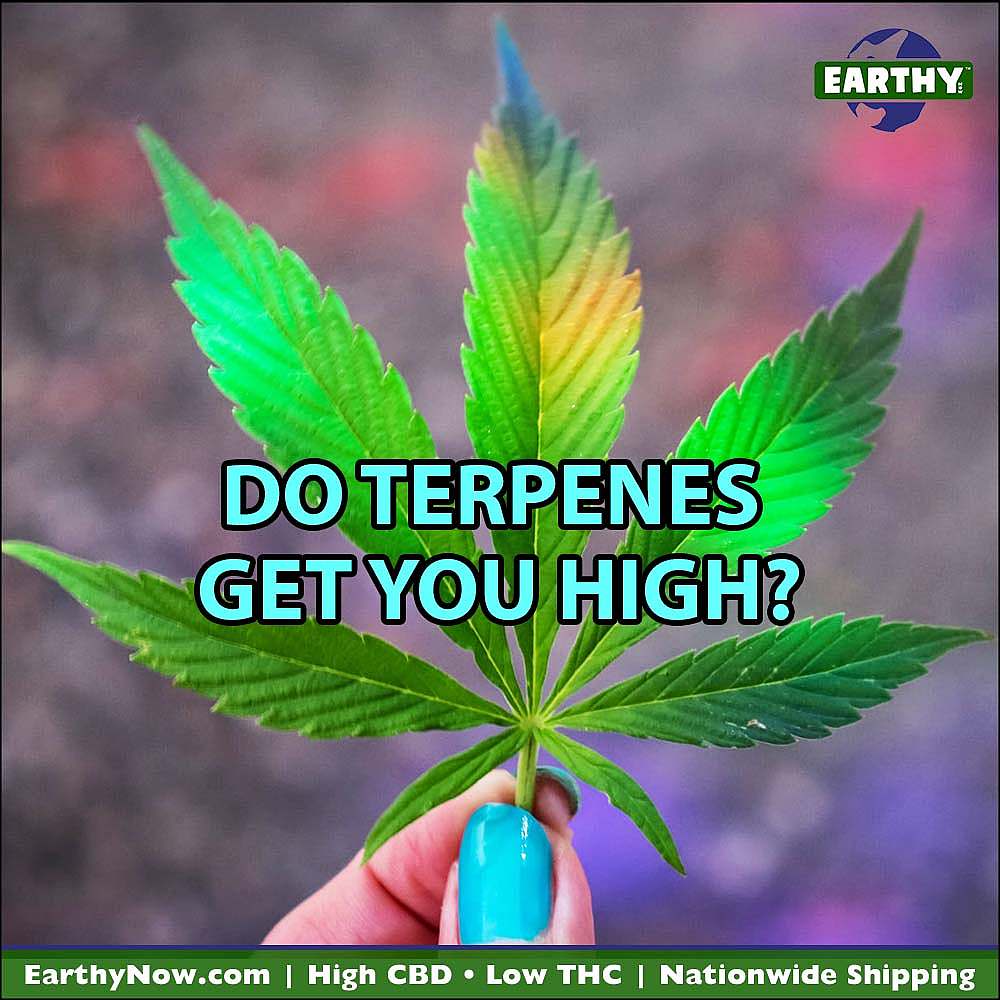With all the talk about cannabis-derived terpenes, you might even think they could get you high. But, the truth is, these aromatic chemical compounds are as innocent in that respect as essential oils like lavender or lemongrass.
Be that as it may, terpenes play a powerful role in the way we experience cannabis. Terpenes interact with other compounds in cannabis to uniquely affect the body’s cell receptors. These effects have increasingly led people to use cannabis terpenes for numerous purposes.
Terpenes on the rise
As researchers continue to study the potential benefits of the terpenes found in cannabis, consumers find more reasons to love the aromatic natural chemicals. Biological responses to terpenes vary depending on the other cannabinoids present, as well as the cannabis strain consumed. Yet, they do not get you high. Terpenes work differently in the body than psychoactive chemical compounds.
Hemp and marijuana both come from the same plant, cannabis, which naturally contains Delta-9 THC, the single cannabinoid that is under federal-control, and the main psychoactive substance in cannabis. The amount of Delta-9 THC existent in the plant material per dry weight determines the federal-compliance of the final product—more on that below.
Cannabis terpenes may be derived from hemp or marijuana. So, do terpenes get you high if they are marijuana terpenes? Again, the answer is no.
Though cannabis with THC can get you high, this effect is not from the terpenes. The psychoactive effects that come from marijuana stem from the cannabinoid THC (tetrahydrocannabinol). Delta-9 THC is the best known of these, and new THC isomers including Delta-8 and Delta-10 are becoming mainstream.
Know your terpenes
Terpenes are not exclusive to cannabis. They are simply organic compounds found in many plants, and even some insects, which affect the way they smell and taste. Cannabis plants just happen to contain high concentrations of them.
Different botanical terpenes determine the characteristic aroma and taste of a plant. For instance, the common terpene linalool gives lavender its distinctive floral scent, or the terpene pinene contributes to the sharp, woody aroma of pine trees and rosemary.
Top 20 Cannabis Derived Terpenes
Why are terpenes important?
In addition to making our flower gardens especially fragrant, terpenes play an evolutionary role. Namely, the scent of a plant can help it survive. As such, these chemical compounds can protect plants from being eaten by insects or other animals by giving off a repellent scent.
Pinene, for instance, which can be found in pine trees and the hops plant, is often added to insect repellents because of the way in which its smell keeps away a variety of insects [1]. On the other hand, terpenes may emit pleasing aromas to lure pollinators. For example, a floral terpene in a poppy helps it to attract insects for cross-pollination in order for it to reproduce [2].
Plant-derived terpenes serve the needs of the plant as well as offer potential benefits to humans. For example, the terpene profile of a eucalyptus tree has been found to produce anti-inflammatory effects [3].
Cannabis vs. botanical terpenes
Although cannabis is technically botanical, as it is a plant, the cannabis industry often refers to terpenes that do not come from the cannabis plant as botanical terpenes. As more people learn about the commonly found terpenes in cannabis, consumers seek out new and exciting variations of them.
Select manufacturers like Earthy use the terpene trifecta to formulate the most desirable and flavorful varieties of cannabis-derived terpenes while creating superior products such as pure oils, vapes, smokables, edibles, and topicals.
Terpenes from non-cannabis plants have been used to scent and flavor various types of goods since ancient times. Terpenes from both sources can also enhance cannabis products with their aromatic essences. For instance, CBD topicals, like Earthy’s Soothing Relief Salve, feature a full spectrum of cannabis terpenes along with those from essential oils like lemongrass, chamomile, and rosemary.
Terpenes & the entourage effect
There is some evidence to indicate terpenes influence the entourage effect: the way in which cannabis compounds—like cannabinoids, flavonoids, and terpenes—work synergistically to enhance the overall effect of the plant on the body [4].
The entourage effect, in relation to cannabis, was first coined by Mechoulam and Ben-Shabat in their 1998 hypothesis that proposed other organic compounds work in tandem with the primary endogenous cannabinoids, thereby enhancing the effects of cannabis.
Part of the special relationship between cannabis and terpenes involves the entourage effect. “The entourage effect, “is a proposed mechanism by which cannabis compounds other than tetrahydrocannabinol (THC) act synergistically with it to modulate the overall psychoactive effects of the plant [4].”
Other cannabinoids, terpenoids, and flavonoids may all play parts in the entourage effect, aiding the overall efficacy of the plant. Without it, some cannabinoids don’t seem to work in the same way. For instance, scientists have found that the mixture of all the components of the plant has different effects than isolated compounds. GW Pharmaceuticals, makers of one of the only sanctioned cannabis-based drugs Sativex (called Nabiximols in the U.S.), found that a whole plant extract was more effective than a single compound for certain therapies. Another researcher noted that single-component drugs like Marinol, a synthetic THC pill, have less therapeutic value than those with more cannabinoids [5].
Additionally, a study published in Science Daily suggests that terpenes may contribute to the entourage effect [6].
Still, research on the entourage effect is in its infancy and some scientists seek more data to be fully convinced [7]. However, many cannabis proponents lean on the existing data, as well as popular anecdotal notions of the entourage effect, and embrace the opportunity to create custom blends of terpenes and cannabinoids to offer consumers specifically designed effects [5].
Can you get high on cannabis-derived terpenes?
A lot of people are asking the question: do terpenes get you high? The short answer is no. However, if you smoke, inhale, or ingest cannabis that contains Delta-8, Delta-9, or Delta-10 THC, the terpenes in the plant can affect the kind of high you may experience.
The reason for this is due to the ways in which terpenes may contribute to the entourage effect. In contrast to marijuana, non-psychoactive cannabinoids from hemp plants, like CBD, do not get you high, yet may still produce the entourage effect while involving the plant’s terpenes in this process.
Do terpenes get you high when they are isolated?
Though isolated cannabis-derived terpenes may mimic the effects of cannabinoids [6], as well as offer benefits [7], they do not produce psychoactive effects in the brain. Recent studies have shown that terpenes may interact with the body’s cell receptors in a similar way as cannabinoids, even when isolated [8].
Are terpenes psychoactive?
Though cannabis terpenes are not psychoactive, they do influence the plant’s effect. Primarily, they affect the way a given plant smells and tastes. Yet, the specific terpenes present in various strains of cannabis, whether from psychoactive or non-psychoactive cannabinoids, may work alongside the cannabinoids to produce the entourage effect, which can influence the way your brain experiences the sensations caused by the plant.
The Farm Bill and hemp vs. marijuana terpenes
Marijuana and hemp both come from the cannabis plant, yet the law treats them quite differently. The 2014 and 2018 Farm Bills established new federal legal definitions and rules for hemp, including the allowance that hemp “and any part of that plant, including the seeds thereof and all derivatives, extracts, cannabinoids, isomers, acids, salts, and salts of isomers, whether growing or not, with a Delta-9 tetrahydrocannabinol concentration of not more than 0.3 percent on a dry weight basis” may be legally produced, sold, transported and used.
Put simply, cannabis with less than .3% Delta-9 THC is defined as hemp, while cannabis with more than .3% Delta-9 THC is defined as marijuana.
Marijuana and hemp both contain terpenes. However, the main difference between the two plants is the type of cannabinods traditionally associated with them. The most well-known cannabinoid in hemp is the non-psychoactive CBD (cannabidiol), whereas, the psychoactive cannabinoid in marijuana is THC (tetrahydrocannabinol). But, Delta-8 THC, Delta-10 THC, and even Delta-9 THC may be derived from federally compliant hemp. Both classifications of cannabis share many of the same terpenes, which is why they often have a similar smell and taste. However, you cannot get “high” from either hemp or marijuana terpenes. Their effects are synergistically mixed into the overall entourage effect.
The differences between the terpenes in cannabis depend on the strain of each plant in question. For example, some of the terpenes found in Indica strains—which can be either hemp or marijuana— are myrcene, beta-caryophyllene, linalool, limonene, and humulene.
On the other hand, some of the terpenes in Sativa strains—also, either hemp or marijuana— are caryophyllene, d-limonene, myrcene, pinene, linalool, alpha-terpineol, and camphene. As such, some of these terpenes are the same as Indica strains, yet others are different, resulting in a different flavor and aroma.
Ultimately, the smell and taste of the different strains of both hemp and marijuana can add to their benefits. Just as essential oils like lavender might be used, terpenes in both hemp and marijuana may serve a similar purpose.
How to enhance your high
Each strain of cannabis possesses its own signature of terpenes, flavonoids, and cannabinoids. In turn, the terpene profile of each signature may serve to enhance your marijuana high or hemp experience by offering other benefits.
In essence, the specific combination of terpenes in each strain can determine the nature of their enhancements.
Common terpenes in cannabis strains
The most common terpene in cannabis is myrcene. Other prevalent terpenes in cannabis include limonene, pinene, beta-caryophyllene, and ocimene.
It’s likely that certain strains have become popular in large part because of their terpene profiles. Lemon Kush and Canna Cake, for instance, are high in limonene; a terpene known for its mood-elevating qualities and lemony smell. Strains like Bubba Kush and GSC boast high amounts of beta-caryophyllene; a terpene with a spicy smell like black pepper or cinnamon, which has been associated with antimicrobial properties [10].
In contrast, the popular strain Cherry Soda is high in myrcene, which is known for helping users relax or become mildly sedated. Sour Diesel, another sought-after strain, is high in both myrcene and limonene and said to energize and uplift while smelling like diesel and lemon [10].
Another option is the Hawaiian Haze strain that features the terpene pinene, which is said to be responsible for this effect while smelling fruity, earthy, and piney [10].
Clean as Cannabis: Terpenes and Cosmetics
Final thoughts on terpenes and getting high
While marijuana is now legal in some states and medical marijuana in still more, cannabinoids from high-CBD, low THC cannabis are federally compliant for all states. So you can take full advantage of cannabinoids like CBD, CBG, CBN, THC-V, Delta-8, Delta-9, and Delta-10, along with all of cannabis’ terpenes and flavonoids to experience the benefits of a full spectrum entourage effect.
Though terpenes do not get you “high” in the psychoactive definition of the word, the sense of satisfaction, well-being, and calm you may feel from them could arguably make you high on life in a way that is just as good. Buy terpenes directly from Earthy Now!
A Toast to Cannabis: Terpenes and Beverages
Disclaimer – Information is provided for educational purposes. It does not, and is not intended to, constitute legal advice or medical advice. We attempt to be accurate and up to date but the legality of cannabinoids and the science of cannabis is evolving. The author is neither a lawyer or a legal expert, nor a doctor or medical expert. You should check with your local authorities and medical providers before buying or using any products.
References
- Repellency of Pinene in the Common House Fly
- Which Flowers Can You Cross Pollinate For New Colors?
- Eucalyptol Terpene Profile
- Wikipedia: Entourage Effect
- Is The Entourage Effect Scientific?
- Studies Show Terpenes Provide Pain Relief
- Parts of the Entourage Effect are Scientifically Valid
- Study Shows Cannabis Terpenes Provide Pain Relief and Contribute to the Entourage Effect
- Cannabis Strains High in Limonene Have Anxiety, Stress, and Depression Reduction
- Leafly – Top Cannabis Strains and Terpenes






